Tuesday dawns perfectly. Gorgeous blue skies, sun, not a rain cloud to be seen. We had been watching the weather and planned our visit to the concentration/death camps around the forecast knowing the exhibits are mostly outside. We didn’t want to slog through the rain and mud to tour them (although that may have been more fitting an atmosphere).
Opening time is 9:00, and we have read that the first English tour is at 10:30 – however you can go in on your own before 10:00am. We decide to just head out as early as possible so that we can be on the first tour and not worry about missing it. We are in the car before 8am – and Alice guides us out of Cracow and into the Polish countryside once more. It is a pretty drive, once again through hill and dale and town and village – and I know there is a high speed autoroute somewhere we can take, but Alice sends us this way, so we follow her unquestioningly (for this once that is).
Even though it is not far (only 80km), it still takes a good 1 ½ hours to reach the main concentration camp entrance. We get our first lesson in Polish touring – don’t pay attention to the parking guys hawking you from the side of the road. There are two guys outside the camp – one on the right – away from the camp – and one on the left at the camp entrance. Both are waving us in. What the heck – we go left into the camp – it is an 8zl fee for all day – ok – and we are literally right at the front door. With barely anyone there yet save tour buses. Nice! (We chose the right lot – which is our clue that in the future we just pull up as close as possible to where ever we are going and look for parking there – don’t react to the first parking sign or guy.)
We walk to the ticket window to get our bearings and sign up for the 10:30 English tour – but we are lucky! There is a 9:30 tour – starts in 10 minutes. Cool. We’re in. Right on time our tour guide appears, and begins to walk us through Auschwitz I, the first concentration camp in system. (There were about 40 camps spread all around Auschwitz and Birkenau – Auschwitz I being the first camp constructed – originally for Polish political prisoners – and then Auschwitz II Birkenau – constructed specifically as a death camp with 4 gas chambers and crematoriums and housing for up to 200,000.) We start off at the main gate – with the famous “Arbeit Macht Frei” sign – then move into the camp proper.
All along our guide gives us a hushed recital of the horrors that occurred here – the sheer numbers, the sorting, the systematic destruction.
Walking through the complex in today’s world, all cleaned up, the camp looks so benign. Lovely brick buildings, lush green grass, it doesn’t seem like anything evil. It is when you get inside the barracks and view the displays, so artfully done – but still so unspeakably horrible. Even though Ed and I have read much about these horrors and this time in history – actually standing here within these fences and walls is indescribable. The mass destruction of so many human lives, the sheer degradation before the death – how one human being can do these things to another is unfathomable.
Walking through the barracks we view the display of eyeglasses collected from the prisoners/victims (picture stinks – I know – you have to see it).
The prosthesis and the shoes….
The pots and pans (the Jews were told they were being relocated, so they were told to bring what - would need for their new life and homes, thus the pots – and their most precious belongings, all of which were stolen by the Nazis)…..
The suitcases, with each prisoner’s name written on it, possibly the only documentation that the individual was here at the camp…..
And the hair – the most horrible display of all. Photos were not allowed, probably a good thing, because the idea that behind the glass display window lay thousands upon thousands of locks of hair, totaling over 2 tons in weight, shaved off the prisoners as they arrived, then woven into cloth for Nazi uniforms …. There isn’t much to say after seeing that.
Back outside, in the sunshine, with our minds reeling, we head to Block 11, which was known as the “Death Block” - it was here that punishments were doled out for suspected clandestine activities. A “court” hearing was held for the suspected individual, then most were shot to death outside in the courtyard. Others were taken to the basement, known as the “bunker”, to punishment cells. There were 4 types of cells – standard cells where a number of prisoners were kept until their sentences were through; dark cells where there was only one small window high on the wall, that barely let any light or air into the cell, these cells were stuffed so full of prisoners that when the door was shut they suffocated; hunger cells where prisoners were starved to death and finally the standing cells – little tiny little cells where, after working all day at some back breaking job, prisoners had to crawl through a small opening to enter, and then stand because there was no room to sit; the cells were stuffed with prisoners so essentially they had to lean on each other and sleep standing up; in the morning, if they survived, they were released out to do their day jobs, only to return again each evening.
The bunker is also where the Germans first experimented with Zyklon B gas on prisoners. It is here that they found their most lethal killing weapon.
And on that note, from Bunker 11, we walk to the gas chamber and crematorium. This was one of the first chambers and it proved too small for what the Nazis needed to first kill the Jews, then dispose of the bodies. Thus the reason Birkenau was conceived and created.
The crematorium concludes our Auschwitz I tour, so we head to the shuttle bus for Birkenau. Here, it a wholly different landscape. The Nazis knowing the war was over and the Russians were bearing down on them took thousands of prisoners from the camp and marched them into Germany (the “Death March”), left those too sick and infirm to go in the camp and then burned and destroyed what they could to try to cover their egregious acts. While most of the buildings are not left standing, you can still stand at the entrance to the camp (remaining intact), stare down the train tracks and really get a feel for the vastness of the camp. So large it was divided into 4 segments (all built by the prisoners themselves) – the quadrants to the left had barracks built of brick, and there is a good number still standing. The barracks in the right quadrants were built of wood (cheaper and quicker to build), and are virtually all gone, the only things remaining are the brick heating chimneys . The camp, as mentioned before, had 4 gas chambers and crematoriums (plus 2 sites in the woods where they burned bodies they couldn’t fit in the crematoriums).
We walk down the tracks to the large selection area we have seen previously in photos. There is an old cattle car on the side of the “platform” that was used in the transfers. And again here, you can only imagine what it was like to be locked inside that car for days on end with hundreds of others, and all your possessions, only to be let out here. It is here that arriving Jews were selected for “work” or death. None knew until this moment what was happening – and even after selection, most didn’t understand until they were at the doors of the gas chambers. There were trees lining the wide “boulevard”, hiding the smoke stacks from the crematorium. Those selected for immediate death (mostly the old, sick, young and women), were told they were going to the showers to clean up, they were told to undress and even to remember the number where their clothes were hung so they could reclaim them after the shower. Then they were herded into the chamber, Zyklon B was dropped in, and 20 minutes later it was all over.
We move down to the ruins of one of the gas chambers/crematoriums. It sits in rubble at the end of the camp, its twin across on the other side of the broad dirt path.
Next we walk through a quadrant of the camp to one of the remaining brick barracks. Inside these barracks are the bunks which housed up to 4 prisoners each – these are the places seen in the published pictures of the Holocaust. You can just feel the desperation, sadness and sickness that must have inhabited each and every one of these buildings.
Our last stop is the “shower” area of the latrines (the actual latrines are being repaired – the building is collapsing and it is not safe to enter). This is where long porcelain troughs designed for washing were held. The construction is all German, sturdy and practical, even including soap holders with a little drain at the bottom so as not to collect water. Which would all be well and good, if they prisoners had soap – or even running water. The conditions here were so horrid (black water, always freezing cold) that no one really showered or washed – but it was also the safest place to have work duty. They latrines and “shower” barracks were so foul, the Nazi guards wouldn’t enter them for fear of catching diseases. Thus, prisoners wanted to work there because they were safe – and this was also to be where any insurgency or clandestine activities took place.
Finishing the tour – we have the options to stay here longer or return on the next shuttle. We decide that this is enough. It is too much to wrap your head around – and to stay longer won’t accomplish anything. There is so much to absorb. Although I would like to come back some day and tour on our own – now that we have had the official tour – I think coming back on our own, we could take a more thorough look at all the displays as well as the camp.
Back at the main museum, we pick up a sandwich for the road (surprisingly good ham and cheese) and head back into town. We want to visit Schindler’s Factory Museum in the Podgorze district this afternoon. We tried to book tickets online, but it says they only allow 15 people in at a time, every 20 minutes, and no tickets are available until Friday – which of course won’t do because we are leaving on Friday. So, because the museum is only 5 minutes from the apartment, we figure we will just stop by there and see if there are any cancellations or spaces available. It can’t hurt.
This time, we decide to take the A4 autoroute back to Cracow (which is the way the guidebooks all say to go) because it will be faster than the Alice over hill and dale route. We turn Alice off after she continually tries to make us turn around and simply follow the signs to the A4.
This takes us a while – we are going a far piece North to get to the highway – but once on it – we fly back toward Cracow at 130KPH. Smooth! Until it’s not. Traffic alert, traffic alert. Dead stop – and we can’t see why, but after 25 minutes we figure it out – it is the toll booth and they have 2 booths shut down for construction. Oh geez, there goes our good time. It takes us over 30 minutes of creeping along to get to be able to actually pay 9zl for the lovely experience. Well, pooh. Maybe that’s why Alice didn’t send us that way in the first place. Or not…I somehow can just not give her that much credit.



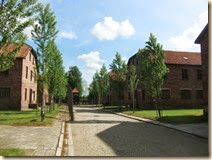





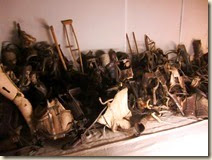







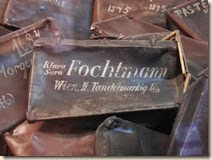




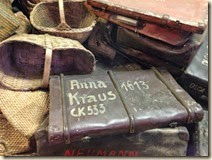

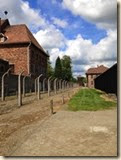

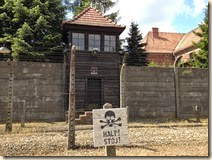







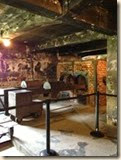







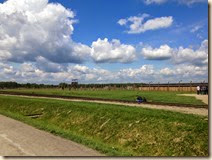


















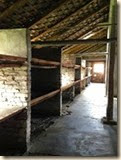

No comments:
Post a Comment